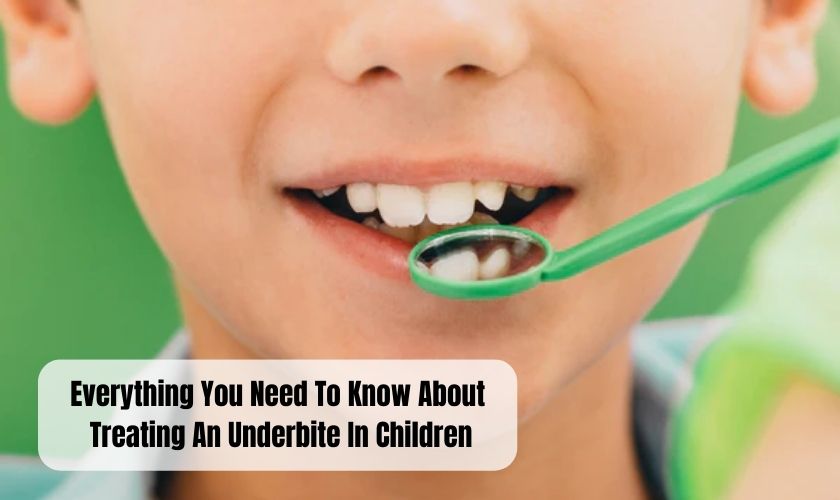Underbites are a common dental issue in children. It occurs when the lower jaw protrudes further than the upper jaw, and can lead to an imbalance of the teeth and facial structure. If left untreated, this condition can cause long-term oral problems, such as premature tooth wear and misalignment of the jaw. Fortunately, there are several treatment options available to correct an underbite in children, from braces and retainers to surgery. In this article, we’ll explain everything you need to know about treating an underbite in children. We’ll cover the causes of an underbite, its symptoms, and various treatment options that can help your child get the smile they deserve.
Causes of an Underbite in Children
An underbite can occur due to a genetic predisposition, functional habits or environmental factors. In cases where the condition is genetic, the lower jaw may be too large for the upper jaw, which causes it to protrude outward. If this is the case, braces and other orthodontic treatments are often needed to bring the teeth and jaws back into alignment. In other cases, a child’s habit of thumb sucking or tongue thrusting can cause the underbite. This type of habit makes it difficult to close the mouth properly and leads to an overdevelopment of the lower jaw. Lastly, environmental factors such as poor nutrition or a traumatic event can cause an underbite.
Genetic Predisposition
When it comes to genetic predisposition for an underbite, the lower jaw is often larger than the upper jaw. This imbalance causes the lower jaw to protrude outward, leading to an underbite. In this case, braces and other orthodontic treatments are usually needed to bring the teeth and jaws back into alignment.
Functional Habits
Functional habits such as thumb sucking or tongue thrusting can cause an underbite in children. These habits make it difficult for the child to close their mouth properly, which leads to an overdevelopment of the lower jaw. If your child is exhibiting any of these habits, it’s important to break them as soon as possible in order to avoid long-term oral problems.
Environmental Factors
Environmental factors such as poor nutrition or a traumatic event can also lead to an underbite. Poor nutrition can cause the teeth and jawbone to develop improperly, while a traumatic event can damage the teeth or jaw and cause an imbalance. If your child has suffered from either of these factors, it’s important to seek treatment from a qualified orthodontist as soon as possible.
Symptoms of an Underbite in Children
There are several symptoms that may indicate that your child has an underbite. These include difficulty biting or chewing food, misalignment of the teeth, and pain in the jaw or teeth. If you notice any of these symptoms, it’s important to consult with a qualified orthodontist as soon as possible in order to begin treatment.
Difficulty Biting or Chewing Food
One of the most common signs of an underbite is difficulty biting or chewing food. This can be caused by the lower jaw protruding further than the upper jaw, which makes it difficult for your child to close their mouth properly. If you notice that your child is having trouble biting or chewing their food, it’s important to consult with an orthodontist right away.
Misalignment of the Teeth
Another symptom of an underbite is the misalignment of the teeth. This occurs when the lower jaw protrudes outward, causing the teeth to become misaligned. If you notice that your child’s teeth are not aligned properly, it’s important to schedule an appointment with a qualified orthodontist.
Pain in the Jaw or Teeth
Pain in the jaw or teeth can also be a symptom of an underbite. If your child is experiencing any pain when they open and close their mouth, it’s important to seek treatment from a qualified orthodontist.
Diagnosing an Underbite in Children
If you suspect that your child has an underbite, it’s important to consult with a qualified orthodontist as soon as possible. The orthodontist will conduct a thorough examination of your child’s mouth and teeth in order to make a diagnosis. They may also take X-rays and bite impressions in order to determine the severity of the underbite.
Oral Exam
The first step in diagnosing an underbite is for the orthodontist to conduct a thorough oral exam. During this exam, they will check for misalignment of the teeth, difficulty biting and chewing, and pain in the jaw or teeth. They may also take measurements of your child’s face, jaw, and mouth in order to determine the severity of the underbite.
X-Rays
The orthodontist may also take X-rays of your child’s face and jaws in order to check for any underlying issues that could be causing the underbite. This will allow them to get a better understanding of the problem and plan the appropriate treatment.
Bite Impressions
The orthodontist may also take bite impressions of your child’s teeth in order to make sure that they are properly aligned. This will help them to determine the best course of treatment for your child.
Conclusion
It’s important to be aware of the symptoms and causes of an underbite in order to ensure that your child receives the appropriate treatment. If you suspect that your child has an underbite, it’s essential to consult with a qualified orthodontist as soon as possible. The orthodontist can conduct a thorough examination and take X-rays and bite impressions in order to determine the best course of treatment for your child.
FAQs
The most common symptoms of an underbite include difficulty biting or chewing food, misalignment of the teeth, and pain in the jaw or teeth. If you notice any of these symptoms, it’s important to consult with a qualified orthodontist as soon as possible.
An underbite can be caused by several factors, including genetics, improper jaw development, and thumb-sucking. It’s important to consult with an orthodontist in order to determine the cause of your child’s underbite.
The treatment for an underbite will depend on the severity of the condition. Depending on the diagnosis, the orthodontist may recommend braces, surgery, or a combination of both. It’s important to consult with an orthodontist in order to determine the best course of treatment for your child.




